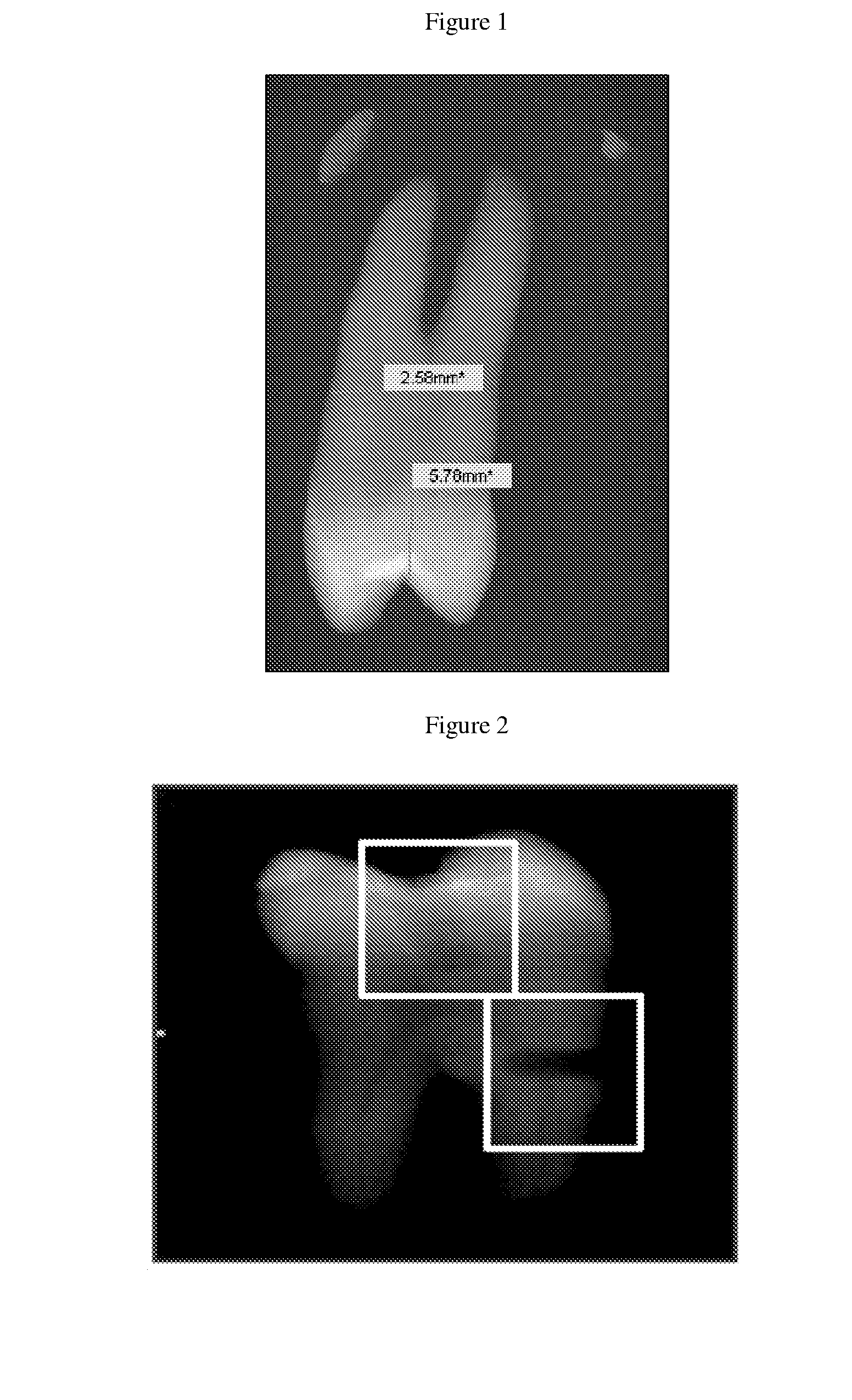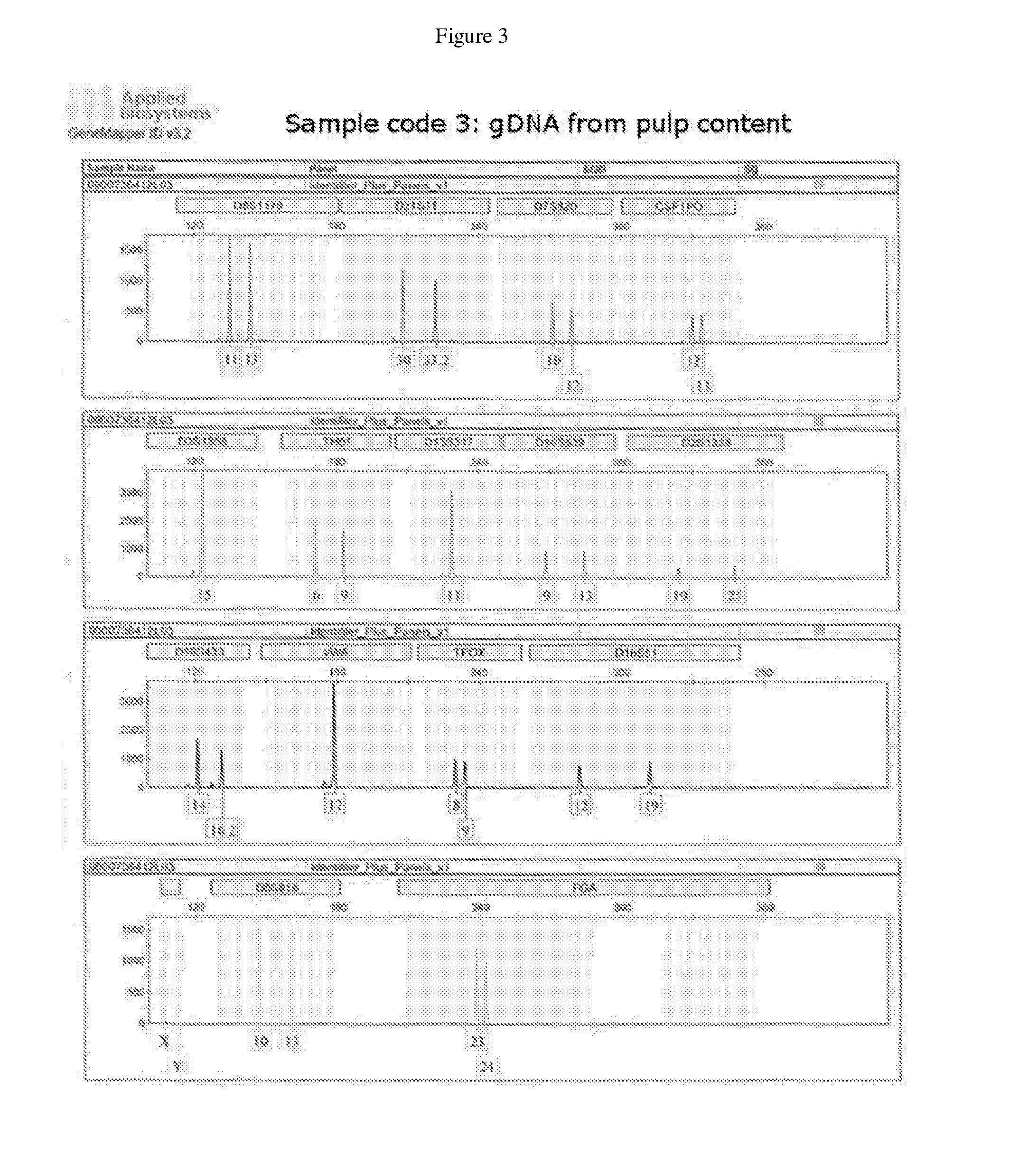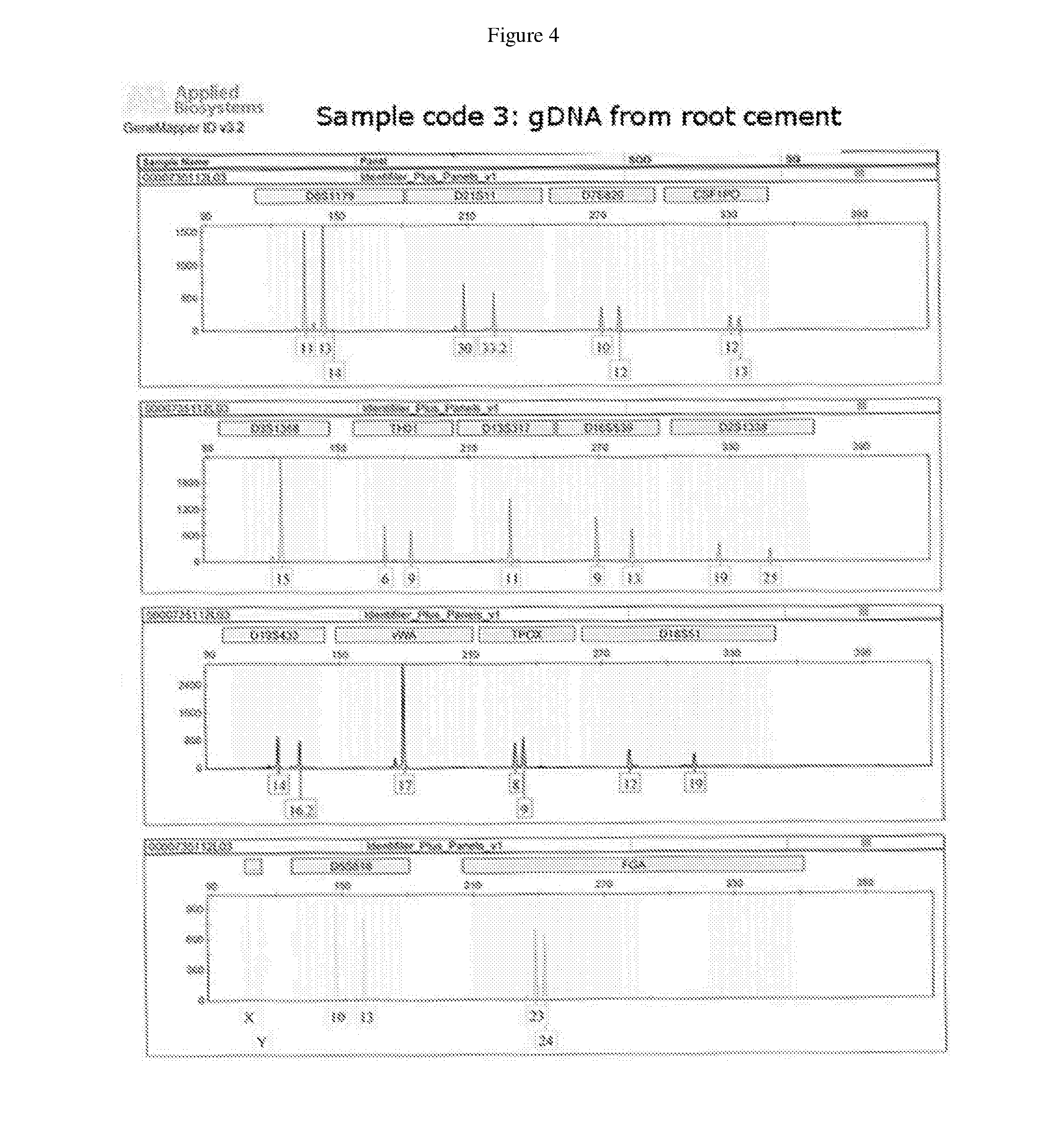Method, systems and kit for forensic identification, post mortem interval estimation and cause of death determination by recovery of dental tissue in physiological conditions
- Summary
- Abstract
- Description
- Claims
- Application Information
AI Technical Summary
Benefits of technology
Problems solved by technology
Method used
Image
Examples
example 1
gDNA and Genetic Profiles Obtained with the Method of the Present Invention
1.1. (a) Teeth Obtaining
1.1.1. Inclusion Criteria:
[0131]11 permanent human teeth, unirradicular or birradicular (molars, premolars, and incisors), numerated from 1 to 11. Table 1 shows the characteristics of the samples.[0132]Gender, age, time since extraction or post mortem interval and individual characteristics of the donors previously known in order to confirm the results of the method.[0133]Teeth with intact structures.
TABLE 1Characteristics of the samples.Age oftheSampleName of toothTime sinceGenderhumancode(International nomenclature)extraction[F or M][years] 1Right maxillary first premolar (1.4)38 yearsM18 2Right maxillary first premolar (1.4)18 years 1 monthsM48 3Left mandibular lateral incisor (3.2)1 year 3 monthsM43 4Left mandibular central incisor (3.1)1 year 3 monthsM43 5Left mandibular first premolar (3.4)2 weeksM25 6Right mandibular third molar (4.8)3 monthsM20 7Right mandibular first premolar ...
example 2
Morphological Analysis (Histological and Cytological Analyses)
[0166]Each sample of rehydrated pulp content was prepared for histological and cytological analyses (see FIGS. 9 to 13).
[0167]The samples for cytological analysis were placed into separate microscope slides through cell spread (smear); they were fixed with cyto spray and allowed to air dry.
[0168]An inverted optic microscope Olympus Ckx41 was used for obtaining the images of cytological analysis. The photographs were obtained with an Olympus Utv 0.5 XC-3 camera and the Micrometrics software.
[0169]The samples for histological analysis were fixed in 10% formalin Hematoxylin and eosin stain and Masson's trichrome staining were applied to the samples for histological analysis. The photographs were obtained with an Olympus Utv 0.5 XC-3 camera and the Micrometrics software.
Results.
[0170]These results allowed designing a synoptic chart of morphological markers that change in relation to post mortem interval or time since extracti...
example 3
Toxicological Analysis
[0174]A sample was selected from a teeth bank, corresponding to an animal tooth from a high environmental pollution Chilean area. The rehydrated pulp content was selected for toxicological analyses.
[0175]For detecting arsenic, the sample of rehydrated pulp content were mixed with HCl at a final concentration of 0.1 M, incubated at 37° C. during 18 hours and centrifuged at 3500 rpm during 10 minutes, pH was adjusted to ph=7.0 with NaOH 1N and the analytes were extracted in chloroform:isopropanol. The samples were dried at 70° C. during 30 minutes for further GC / MS analysis. The samples were quantified in the ZEEnit 700 P (Analytik Jena) equipment, that represents a new generation of variable compact tandem spectrometers for flame mode, hydride, HydrEA and graphite furnace technology (36)
[0176]A similar analysis technology was found in the literature for the development and validation of a gas chromatography-mass spectrometry assay for opiates and cocaine in huma...
PUM
| Property | Measurement | Unit |
|---|---|---|
| Temperature | aaaaa | aaaaa |
| Length | aaaaa | aaaaa |
| Fraction | aaaaa | aaaaa |
Abstract
Description
Claims
Application Information
 Login to View More
Login to View More - R&D
- Intellectual Property
- Life Sciences
- Materials
- Tech Scout
- Unparalleled Data Quality
- Higher Quality Content
- 60% Fewer Hallucinations
Browse by: Latest US Patents, China's latest patents, Technical Efficacy Thesaurus, Application Domain, Technology Topic, Popular Technical Reports.
© 2025 PatSnap. All rights reserved.Legal|Privacy policy|Modern Slavery Act Transparency Statement|Sitemap|About US| Contact US: help@patsnap.com



